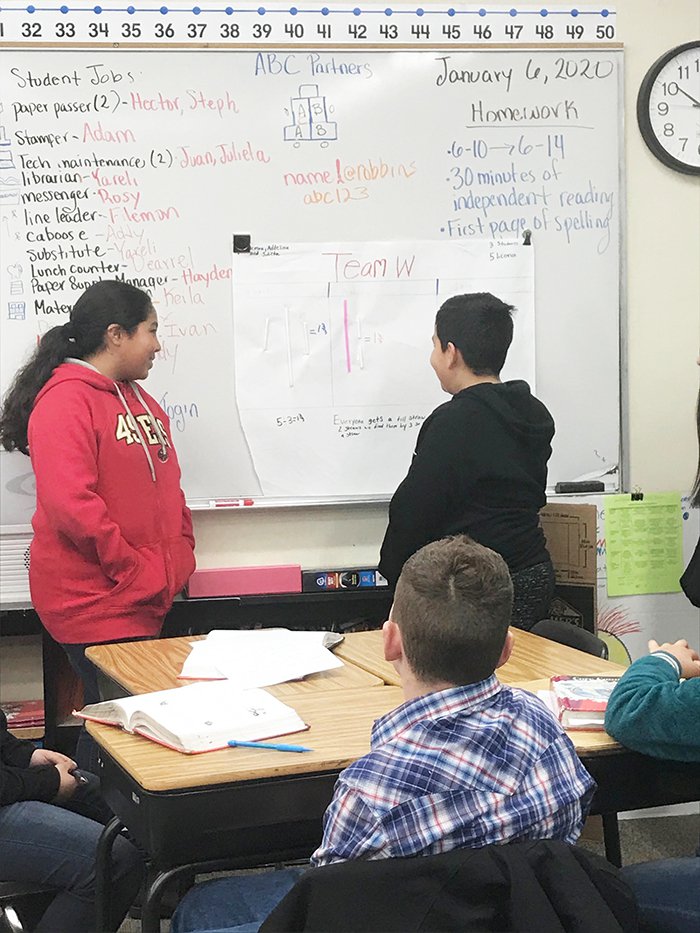Progress Snapshot: School promotes reasoning skills to raise math scores
Progress Snapshot: School promotes reasoning skills to raise math scores
February 10, 2020
In Progress Snapshot, educators share how their school made progress on student performance and school quality measures.
District: Winship-Robbins Elementary School District, Robbins Elementary School (K-8)
Location: Robbins, Calif. (Sutter County)
Administrator: Superintendent/Principal Dawn Carl
Area for growth: Achievement gap in mathematics among English Language Learners and students of ethnicity, specifically Hispanic. At WRESD, 81 percent of students are socially-economically disadvantaged, 81 percent are Hispanic, and 40 percent are English Language Learners.
Strategies
“The strategy we employed to help our students’ achievement was specifically through professional development in Visible Learning for Mathematics by John Hattie (Corwin Publishing). With the support of WRESD Curriculum and Instructional Coordinator Kimberly Richter, our instructional staff began to take a look at our present mathematical practices, and through a reflective lens we determined strategies and skills that would promote mathematical thinking, reasoning and develop the students’ conceptual practices. The new objectives we incorporated into our mathematical instruction were Content, Academic Language, and Collaboration and Social Structures for learning. In addition we incorporated productive struggle to promote think-time and reasoning skills. We also brought number talks (oral number reasoning) and application problems (word problems) to the beginning of each lesson instead of providing this very important instruction at the end ‘if we had time.’
“Another important strategy is the professional development that all instructional staff received by Kate Kinsella and Teresa Hancock through the Academic Vocabulary Toolkit curriculum. This very comprehensive collaborative method of teaching vocabulary has promoted our students’ collaboration and responses, while also strengthening our teachers’ collaborative techniques in the classroom.
“Lastly, our district has developed Individual Learning Plans for each student (3-8) in ELA and mathematics. These ILPs help our students to engage in their own learning by setting goals and determining next steps. These goals are set by the student with their teacher’s input, and then shared with parents so that there is a learning connection between home and school.”
Outcome
“Our students’ growth in mathematics was quite significant as determined by the state assessment (CAASPP growth of 16.2 points), our district assessments through MAPs (NWEA) and our Eureka Math (K-5) and CPM (6-8) curriculum assessments.”
Feedback
“Presently, our student population is the most excited by their growth and achievement. Our parents are aware of their student’s achievement; however, since 92 percent of our students come from a home that speaks a language other than English, we have had to inform them through our school’s translated newsletters and student progress reports.
“The teachers are very aware that their diligence to the instruction of their students, their thoughtfulness in planning, and their ability to reflect on instructional practices have provided outcomes and achievements that will enable their students to achieve well into the future.”
Do you want to share the progress at your school or district? E-mail EdCal Editor Michelle Carl for more information.

Sixth-graders at Robbins Elementary School work on breaking down a real-world division problem.
ADVERTISEMENT


